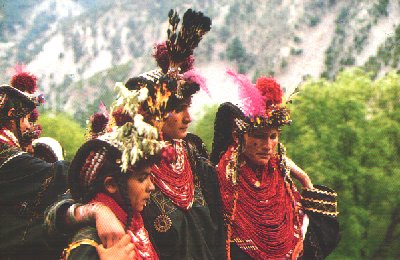|
NWFP
|
|

|
|
Khyber
Pass, the largest and the most renowned of
these, is 56 kilometres long and connects
Kabul in Afghanistan with the fertile vale
of Peshawar in the NWFP. The Tochi Pass
connects Ghazni is Afghanistan with Bannu
in Pakistan and the Gomal Pass provides a
route from Afghanistan to Dera Ismail Khan
which overlooks the Punjab Plain. the
Bolan Pass connects the Sindh Plain with
Quetta in Balochistan and onward through
Chaman with Afghanistan. Enclosed by the
brnahces of western mountains are a number
of fertile plains which have been formed
by rivers rising from these mountains and
falling into Indus. From north to south
are the vale of Peshawar (Kabul River),
Kohat Plain(Kohat River) and Bannu Plain
(River Kurram and Tochi),
Peshawar
valley covers some 2,200 sq. miles (5,698
sq.km) and is very fertile. It is
irrigated by a network of canals which are
supplemented by water of the Warsak Dam on
Kabul River. Wheat, maize, sugarcane
tobacco and sugarbeet are cultivated in
large quantities. Large industrial Plants
have been established at Peshawar, Mardan,
Nowshera and Charsadda. The sugar mills at
Mardan and Charsadda are reported to be
the largest in Asia. Kohat valley is
uneven and broken, but has fertile soil.
The Tanda
Dam on River Kohat supplemented water of
the tubewells and the

small tanks
formed by damming the rivers. Wheat,
barley, gram, maize, rice and melons are
grown in substantial quantities. Kohat
(76,000), an important town, owes its
significance as a marketing centre and a
cantonment. The Bannu lowland is made of
sandy and gravelly materials brought down
by rivers, except for a small area near
Bannu town (43,000), which contains rich
silt. Perenial irrigation, made possible
by the construction of the Kurram Garhi
Dam on River Tochi, is confined to the
land between River Kurram and River Tochi.
The Bannu plain produces wheat, gram,
maize, barely, rice and sugarcane. In
unirrigated parts of Kohat and Bannu
plains are raised flat tailed sheep,camels
and donkeys and wool is the most important
commerical crop.
|
|
|
 | | | |
|


